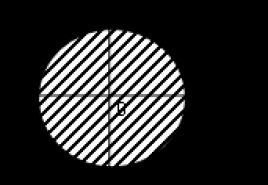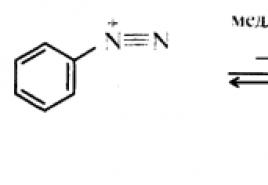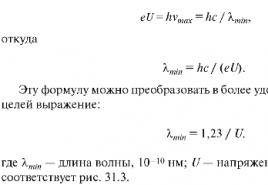Huygens' principle. Laws of refraction and reflection of light
Many people have known about the existence of such a concept as “the speed of light” since early childhood. Most people know that light moves very quickly. But not everyone knows in detail about the phenomenon.
Many people have noticed that during a thunderstorm there is a delay between the flash of lightning and the sound of thunder. The outbreak usually gets to us faster. This means that it has greater speed than sound. What is this connected with? What is the speed of light and how is it measured?
What is the speed of light?
Let's first understand what the speed of light is. Scientifically, this is a value that shows how fast rays move in a vacuum or in air. You also need to know what light is. This is radiation that is perceived by the human eye. The speed, as well as other properties, such as refraction, depend on the environmental conditions.
Interesting fact: Light takes 1.25 seconds to travel from the Earth to its satellite, the Moon.

What is the speed of light in your own words?
To explain in simple words, the speed of light is the time period during which a light ray travels some distance. Time is usually measured in seconds. However, some scientists use other units of measurement. Distance is also measured differently. Basically it's a meter. That is, this value is calculated in m/s. Physics explains it this way: a phenomenon that moves at a certain speed (constant).
Related materials:
Eratosthenes and the circumference of the Earth
To make it easier to understand, let's look at the following example. A cyclist moves at a speed of 20 km/h. He wants to catch up with the driver of a car whose speed is 25 km/h. If you do the math, the car travels 5 km/h faster than the cyclist. With rays of light things are different. No matter how fast the first and second person move, the light, relative to them, moves at constant speed.
What is the speed of light?
When not in a vacuum, the light is affected by various conditions. The substance through which the rays pass, including. If without oxygen access the number of meters per second does not change, then in an environment with air access the value changes.
Light travels more slowly through various materials such as glass, water and air. These phenomena are given a refractive index to describe how much they slow down the movement of light. Glass has a refractive index of 1.5, which means that light passes through it at a speed of about 200 thousand kilometers per second. The refractive index of water is 1.3, while the refractive index of air is slightly greater than 1, meaning that air slows down light only slightly.
Related materials:
At what speed does the Earth move around its axis and the Sun?
Consequently, after passing through air or liquid, the speed slows down, becoming less than in a vacuum. For example, in various bodies of water, the speed of movement of rays is 0.75 of the speed in space. Also, at a standard pressure of 1.01 bar, the indicator slows down by 1.5-2%. That is, under terrestrial conditions, the speed of light varies depending on environmental conditions.
For this phenomenon, a special concept was invented - refraction. That is, the refraction of light. It is widely used in various inventions. For example, a refractor is a telescope with an optical system. This is also used to create binoculars and other equipment, the essence of which is the use of optics.
 Refractor telescope - diagram
Refractor telescope - diagram In general, a beam is least susceptible to refraction when passing through ordinary air. When passing through specially created optical glass, the speed is approximately 195 thousand kilometers per second. This is almost 105 km/sec less than the constant.
The most accurate value of the speed of light
Over the years, physicists have accumulated experience in researching the speed of light rays. Currently, the most accurate value for the speed of light is 299,792 kilometers per second. The constant was established in 1933. The number is still relevant today.
However, later difficulties arose with determining the indicator. This was due to errors in the measurement of the meter. Now the very value of the meter directly depends on the speed of light. It is equal to the distance that the rays travel in a certain number of seconds - 1/the speed of light.
Related materials:
How do we study the Sun?
What is the speed of light in a vacuum?
Since light in a vacuum is not affected by various conditions, its speed does not change as much as on Earth. The speed of light in a vacuum is 299,792 kilometers per second. This figure is the limit. It is believed that nothing in the world can move faster, even cosmic bodies that move quite quickly.
For example, a fighter plane, the Boeing X-43, which exceeds the speed of sound almost 10 times (more than 11 thousand km/h), flies slower than the beam. The latter moves more than 96 thousand kilometers per hour faster.
How was the speed of light measured?
The very first scientists tried to measure this value. Various methods were used. In the period of antiquity, people of science believed that it was infinite, therefore it was impossible to measure it. This opinion remained for a long time, until the 16-17th century. At that time, other scientists appeared who suggested that the beam had an end and that the speed could be measured.

The famous Danish astronomer Olaf Roemer brought knowledge about the speed of light to a new level. He noticed that the eclipse of Jupiter's moon was late. Nobody paid attention to this before. Consequently, he decided to calculate the speed.
The speed of light is the distance that light travels per unit time. This value depends on the substance in which the light propagates.
In a vacuum, the speed of light is 299,792,458 m/s. This is the highest speed that can be achieved. When solving problems that do not require special accuracy, this value is taken equal to 300,000,000 m/s. It is assumed that all types of electromagnetic radiation propagate in a vacuum at the speed of light: radio waves, infrared radiation, visible light, ultraviolet radiation, x-rays, gamma radiation. It is designated by a letter With .
How was the speed of light determined?

In ancient times, scientists believed that the speed of light was infinite. Later, discussions on this issue began among scientists. Kepler, Descartes and Fermat agreed with the opinion of ancient scientists. And Galileo and Hooke believed that, although the speed of light is very high, it still has a finite value.

Galileo Galilei
One of the first to try to measure the speed of light was the Italian scientist Galileo Galilei. During the experiment, he and his assistant were on different hills. Galileo opened the shutter on his lantern. At the moment when the assistant saw this light, he had to do the same actions with his lantern. The time it took for the light to travel from Galileo to the assistant and back turned out to be so short that Galileo realized that the speed of light is very high, and it is impossible to measure it at such a short distance, since light travels almost instantly. And the time he recorded only shows the speed of a person’s reaction.
The speed of light was first determined in 1676 by the Danish astronomer Olaf Roemer using astronomical distances. Using a telescope to observe the eclipse of Jupiter's moon Io, he discovered that as the Earth moves away from Jupiter, each subsequent eclipse occurs later than calculated. The maximum delay, when the Earth moves to the other side of the Sun and moves away from Jupiter at a distance equal to the diameter of the Earth's orbit, is 22 hours. Although the exact diameter of the Earth was not known at that time, the scientist divided its approximate value by 22 hours and obtained a value of about 220,000 km/s.

Olaf Roemer
The result obtained by Roemer caused distrust among scientists. But in 1849, the French physicist Armand Hippolyte Louis Fizeau measured the speed of light using the rotating shutter method. In his experiment, light from a source passed between the teeth of a rotating wheel and was directed onto a mirror. Reflected from him, he returned back. The speed of rotation of the wheel increased. When it reached a certain value, the beam reflected from the mirror was delayed by a moving tooth, and the observer did not see anything at that moment.
Fizeau's experience
Fizeau calculated the speed of light as follows. The light goes its way L from the wheel to the mirror in a time equal to t 1 = 2L/c . The time it takes for the wheel to turn ½ slot is t 2 = T/2N , Where T - period of wheel rotation, N - number of teeth. Rotation frequency v = 1/T . The moment when the observer does not see light occurs when t 1 = t 2 . From here we get the formula for determining the speed of light:
c = 4LNv
Having carried out calculations using this formula, Fizeau determined that With = 313,000,000 m/s. This result was much more accurate.

Armand Hippolyte Louis Fizeau
In 1838, French physicist and astronomer Dominique François Jean Arago proposed using the rotating mirror method to calculate the speed of light. This idea was put into practice by the French physicist, mechanic and astronomer Jean Bernard Leon Foucault, who in 1862 obtained the value of the speed of light (298,000,000±500,000) m/s.

Dominique Francois Jean Arago
In 1891, the result of the American astronomer Simon Newcomb turned out to be an order of magnitude more accurate than Foucault's result. As a result of his calculations With = (99,810,000±50,000) m/s.
Research by the American physicist Albert Abraham Michelson, who used a setup with a rotating octagonal mirror, made it possible to determine the speed of light even more accurately. In 1926, the scientist measured the time it took light to travel the distance between the tops of two mountains, equal to 35.4 km, and obtained With = (299,796,000±4,000) m/s.
The most accurate measurement was carried out in 1975. In the same year, the General Conference on Weights and Measures recommended that the speed of light be considered equal to 299,792,458 ± 1.2 m/s.
What does the speed of light depend on?
The speed of light in a vacuum does not depend on either the frame of reference or the position of the observer. It remains constant, equal to 299,792,458 ± 1.2 m/s. But in various transparent media this speed will be lower than its speed in vacuum. Any transparent medium has an optical density. And the higher it is, the slower the speed of light propagates in it. For example, the speed of light in air is higher than its speed in water, and in pure optical glass it is lower than in water.
If light moves from a less dense medium to a denser one, its speed decreases. And if the transition occurs from a more dense medium to a less dense one, then the speed, on the contrary, increases. This explains why the light beam is deflected at the transition boundary between two media.
The speed of light in different media varies significantly. The difficulty is that the human eye does not see it in the entire spectral range. The nature of the origin of light rays has interested scientists since ancient times. The first attempts to calculate the speed of light were made as early as 300 BC. At that time, scientists determined that the wave propagated in a straight line.
Quick response
They managed to describe with mathematical formulas the properties of light and the trajectory of its movement. became known 2 thousand years after the first research.
What is luminous flux?
A light beam is an electromagnetic wave combined with photons. Photons are understood as the simplest elements, which are also called quanta of electromagnetic radiation. The luminous flux in all spectra is invisible. It does not move in space in the traditional sense of the word. To describe the state of an electromagnetic wave with quantum particles, the concept of the refractive index of an optical medium is introduced.
 The light flux is transferred in space in the form of a beam with a small cross section. The method of movement in space is derived by geometric methods. This is a rectilinear beam, which, at the border with various media, begins to refract, forming a curvilinear trajectory. Scientists have proven that the maximum speed is created in a vacuum; in other environments, the speed of movement can vary significantly. Scientists have developed a system in which a light beam and a derived value are the basis for the derivation and reading of certain SI units.
The light flux is transferred in space in the form of a beam with a small cross section. The method of movement in space is derived by geometric methods. This is a rectilinear beam, which, at the border with various media, begins to refract, forming a curvilinear trajectory. Scientists have proven that the maximum speed is created in a vacuum; in other environments, the speed of movement can vary significantly. Scientists have developed a system in which a light beam and a derived value are the basis for the derivation and reading of certain SI units.
Some historical facts
About 900 years ago, Avicena suggested that, regardless of the nominal value, the speed of light has a finite value. Galileo Galilei tried to experimentally calculate the speed of light. Using two flashlights, the experimenters tried to measure the time during which a light beam from one object would be visible to another. But such an experiment turned out to be unsuccessful. The speed was so high that they were unable to detect the delay time.
Galileo Galilei noticed that Jupiter had an interval between eclipses of its four satellites of 1320 seconds. Based on these discoveries, in 1676, Danish astronomer Ole Roemer calculated the speed of propagation of a light beam as 222 thousand km/sec. At that time, this measurement was the most accurate, but it could not be verified by earthly standards.
After 200 years, Louise Fizeau was able to calculate the speed of a light beam experimentally. He created a special installation with a mirror and a gear mechanism that rotated at high speed. The light flux was reflected from the mirror and returned back after 8 km. As the wheel speed increased, a moment arose when the gear mechanism blocked the beam. Thus, the speed of the beam was set at 312 thousand kilometers per second.
 Foucault improved this equipment, reducing the parameters by replacing the gear mechanism with a flat mirror. His measurement accuracy turned out to be closest to the modern standard and amounted to 288 thousand meters per second. Foucault made attempts to calculate the speed of light in a foreign medium, using water as a basis. The physicist was able to conclude that this value is not constant and depends on the characteristics of refraction in a given medium.
Foucault improved this equipment, reducing the parameters by replacing the gear mechanism with a flat mirror. His measurement accuracy turned out to be closest to the modern standard and amounted to 288 thousand meters per second. Foucault made attempts to calculate the speed of light in a foreign medium, using water as a basis. The physicist was able to conclude that this value is not constant and depends on the characteristics of refraction in a given medium.
A vacuum is a space free of matter. The speed of light in vacuum in the C system is designated by the Latin letter C. It is unattainable. No item can be overclocked to such a value. Physicists can only imagine what might happen to objects if they accelerate to such an extent. The speed of propagation of a light beam has constant characteristics, it is:
- constant and final;
- unattainable and unchangeable.
Knowing this constant allows us to calculate the maximum speed at which objects can move in space. The amount of propagation of a light beam is recognized as a fundamental constant. It is used to characterize space-time. This is the maximum permissible value for moving particles. What is the speed of light in a vacuum? The current value was obtained through laboratory measurements and mathematical calculations. She equal to 299.792.458 meters per second with an accuracy of ± 1.2 m/s. In many disciplines, including school ones, approximate calculations are used to solve problems. An indicator equal to 3,108 m/s is taken.
 Light waves in the human visible spectrum and X-ray waves can be accelerated to readings approaching the speed of light. They cannot equal this constant, nor exceed its value. The constant was derived based on tracking the behavior of cosmic rays at the moment of their acceleration in special accelerators. It depends on the inertial medium in which the beam propagates. In water, the transmission of light is 25% lower, and in air it will depend on temperature and pressure at the time of calculations.
Light waves in the human visible spectrum and X-ray waves can be accelerated to readings approaching the speed of light. They cannot equal this constant, nor exceed its value. The constant was derived based on tracking the behavior of cosmic rays at the moment of their acceleration in special accelerators. It depends on the inertial medium in which the beam propagates. In water, the transmission of light is 25% lower, and in air it will depend on temperature and pressure at the time of calculations.
All calculations were carried out using the theory of relativity and the law of causality derived by Einstein. The physicist believes that if objects reach a speed of 1,079,252,848.8 kilometers/hour and exceed it, then irreversible changes will occur in the structure of our world and the system will break down. Time will begin to count down, disrupting the order of events.
The definition of meter is derived from the speed of a light ray. It is understood as the area that a light beam manages to travel in 1/299792458 of a second. This concept should not be confused with the standard. The meter standard is a special cadmium-based technical device with shading that allows you to physically see a given distance.







